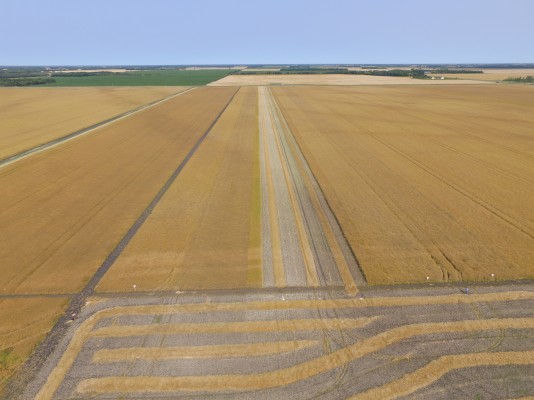Canola harvest will be happening soon, and farmers are looking for ways to get as much of their crop in the bin as possible. The traditional approach to accomplish this has been to swath at 60% seed colour change (SCC). Any earlier, and you could lose yield, any later and you can also lose yield – seems like a pretty narrow window! But as many growers can attest, this 60% rule is more art than science.
A perfectly uniform stand in canola is generally the exception rather than the rule (unless you’ve tried our newest CS2300 of course 😊). This makes it challenging to accurately assess crop maturity. This being the case, western Canadian growers are no slouches when it comes to canola – most have developed a finely tuned spidey sense on when they need to swath.
While the majority of canola growers know when to act, you occasionally drive by a freshly cut field with swaths greener than a St. Patrick’s Day parade. Perhaps the field was at a higher risk of frost, in which case, the early swath timing would be justified. Either way, cutting too early can decrease crop yield, crop quality such as protein/oil content, and increase chlorophyll retention leading to reduction in grade [i] - this of course needs to be minimized to maximize both yield and quality and ultimately overall returns.
What exactly does the 60% rule mean? Starting from the bottom of the main stem, crack pods and count the number of seeds that have started to turn colour. Work your way up by sampling pods at the mid and highest point of the main stem. Seeds from this higher tier may still be green but can be rolled without being crushed between the fingers. When the percentage of seeds counted have either turned colour or can be rolled reaches 60%, the crop is ready to swath. The artistry comes in selecting the most representative plants in the field, estimating the percentage of seeds that have turned (unless you really do want to count all of them), and even finding the main stem to begin with, which can be a particular challenge on plants with lots of branching, typical on fields with low plant populations.
Where cutting the crop too early can lead to reduced yield and quality, higher yield, protein and oil content have been observed in a crop where the seeds have had a chance to develop longer[ii]. Delayed swathing or straight-cutting can help to prolong development, so why doesn’t everyone delay swath or switch to straight-cutting? Shatter losses have been the main limiting factor, however there are now several hybrids on the market that provide higher tolerance to shattering. In general, products with these claims can buy you more time at harvest and be cut at 80% SCC or can be straight-cut at 100% SCC, thereby minimizing the chance that you’ll cut too early.
While straight-cutting may seem like a silver bullet, there are still benefits to swathing canola that many don’t want to give up, such as earlier harvest, better management options in uneven stands, potential for more uniform seed maturity, and better dry down of green weed seeds to reduce dockage moisture, thereby minimizing spoilage during storage. Others also consider the overall package of the hybrid. Where one variety might have pod-shatter tolerance, a variety better suited to swathing might have better blackleg resistance and the decision will come down to where a grower sees the most potential to preserve yield - am I going to lose more to shatter or disease?
Whatever harvest method a grower chooses, CANTERRA SEEDS has canola hybrids for you. To learn more, please visit our product pages.
[i] Vera, C.L., Downey, R.K., Woods, S.M., Raney, J.P., McGregor, D.I., Elliot, R.H. and Johnson, E.N. 2007. Yield and quality of canola seed as affected by stage of maturity at swathing. Can.J.Plant Sci. 87:13-26
[ii] Vera et. al.


